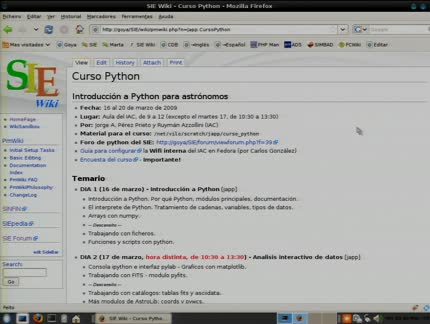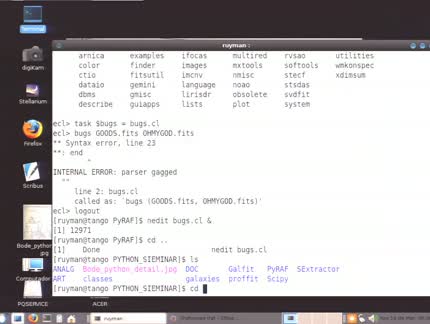Found 36 talks width keyword programming language

Abstract
Series: XXX Canary Islands Winter School of Astrophysics: Big Data in Astronomy
Topic: Deep learning
Lecture 1

Abstract
Series: XXX Canary Islands Winter School of Astrophysics: Big Data in Astronomy
Topic: Machine learning methods for non-supervised classification and dimension reduction techniques
Lecture 1
No sound available

Abstract
Series: XXX Canary Islands Winter School of Astrophysics: Big Data in Astronomy
Topic: Supervised learning: classification and regression
Lecture 2

Abstract
Series: XXX Canary Islands Winter School of Astrophysics: Big Data in Astronomy
Topic: Supervised learning: classification and regression
Lecture 1

Abstract
Series: XXX Canary Islands Winter School of Astrophysics: Big Data in Astronomy
Topic: Data challenges and solutions in forthcoming surveys
Lecture 1

Abstract
Series: XXX Canary Islands Winter School of Astrophysics: Big Data in Astronomy
Topic: General overview on the use of machine learning techniques in astronomy
Lecture 1

Abstract
With the advent of GPU accelerators the landscape of High Performance Computing has started to change rapidly. While this is in principle good news, the increased compute power comes with a steep price tag in that new languages (CUDA, OpenCL) must be used. Recently Intel has announced their own coprocessor Many Integrated Cores (MIC) technology which will deliver competitive performance but will be programmed through familiar languages (Fortran, C/C++ and OpenMP). In my talk I will introduce Intel's MIC architecture and will discuss the ongoing efforts at the Texas Advanced Computing Center to build a 10 PetaFlop cluster with MIC coprocessors in early 2013. Coprocessors (MIC) and accelerators (GPU) are here to stay and the changing hardware will spur considerable changes in general software design. Astrophysics codes of all varieties (for example highly parallel simulations, data-intensive software pipelines for large surveys, and even data reduction software on desktops) will have to adapt to the new environment. I will discuss software design, performance considerations, and optimizations in general and specifically with respect to the MIC technology. In the second part of my talk I will introduce the software package ASSET (Advanced Spectral Synthesis 3D Tool) that allows for the fast and efficient calculation of spectra from 3D hydrodynamical models and will highlight recent projects that have employed high-resolution (> 1,000,000), wide-range (1000's of Angstroem) synthetic spectra derived from 3D radiation transfer.


Abstract

Abstract
<< First « Newer 1 | 2 | 3 | 4 Older » Last >>
Upcoming talks
- TODAY: Classical Be stars - Constraining binary interaction physics in massive starsDr. Julia BodensteinerThursday April 25, 2024 - 10:30 GMT+1 (Aula)
- Runaway O and Be stars found using Gaia DR3, new stellar bow shocks and search for binariesMar Carretero CastrilloTuesday April 30, 2024 - 12:30 GMT+1 (Aula)









